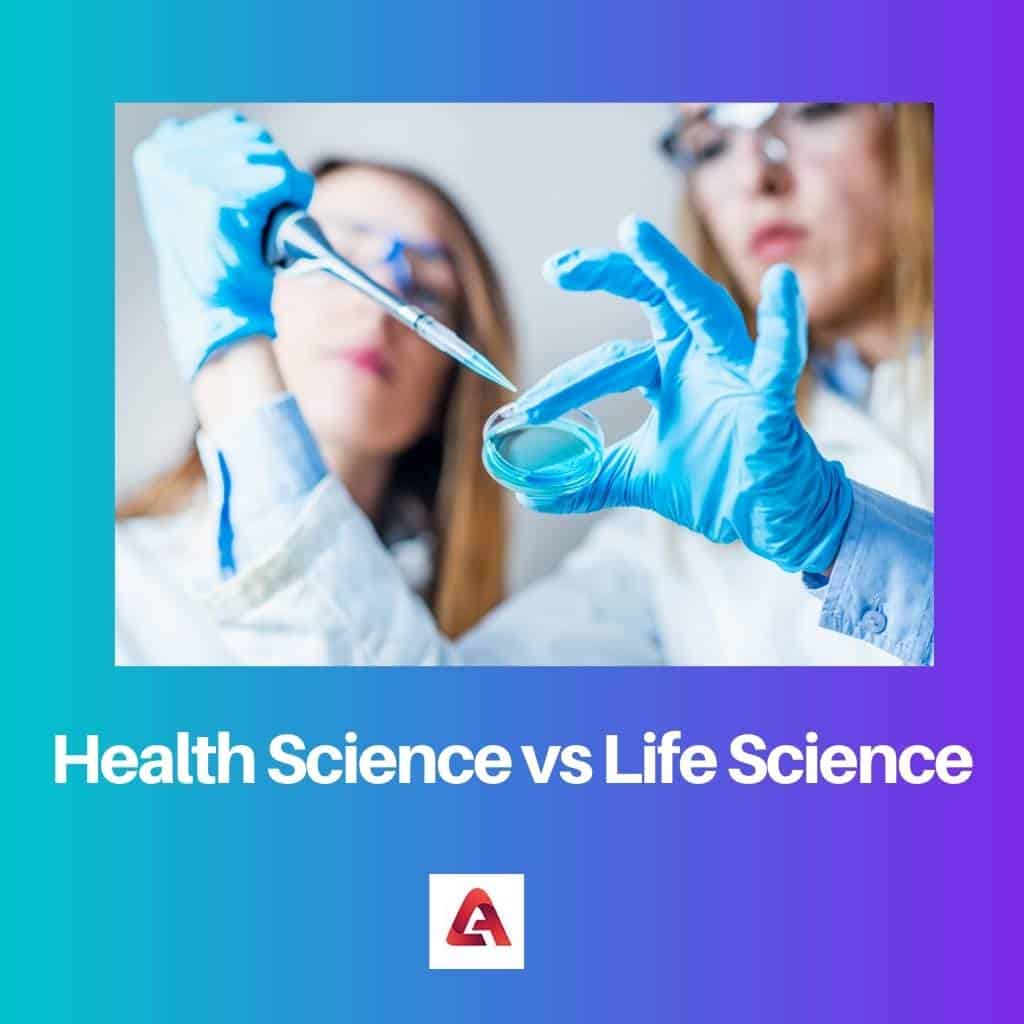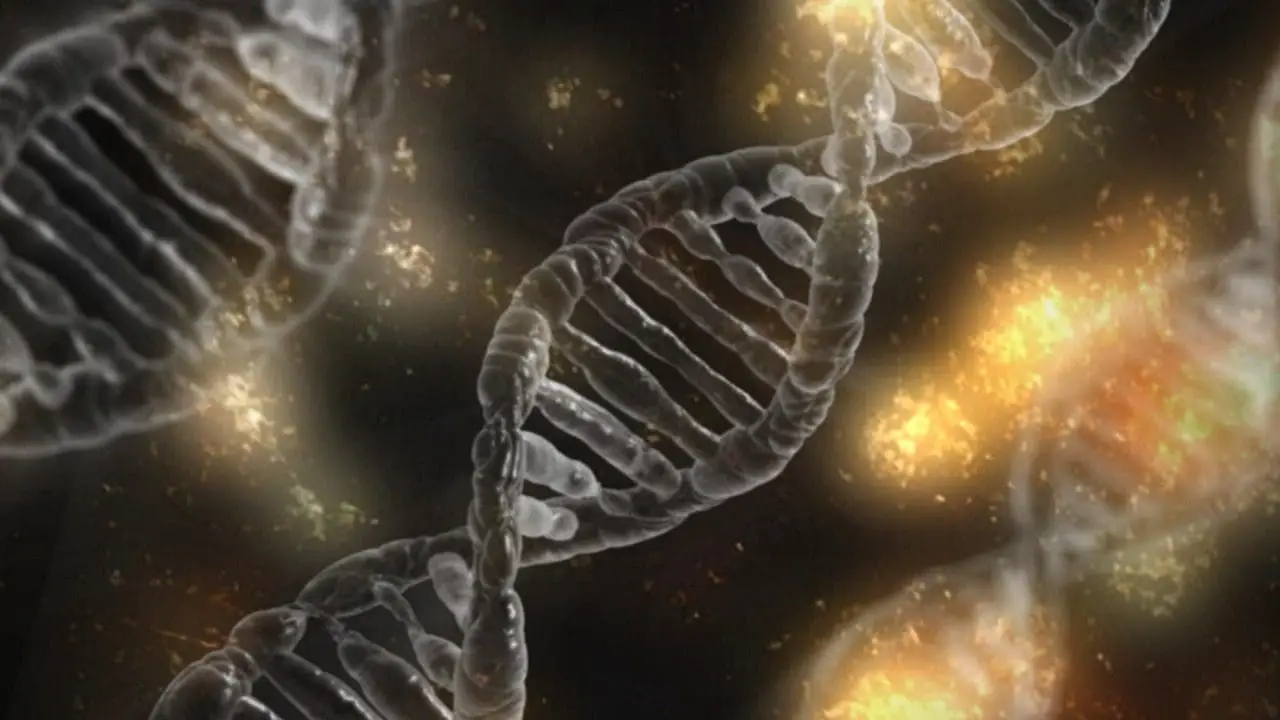There exist various branches of science and technology at present. Science has several meanings, theories, components, factors, properties, etc.
In today’s world, science has evolved to such an extent its development right from early ages and development in its various branches is meritorious.
May it is the medical field or environmental impact, science has evolved in all aspects, and many more inventions in future are expected which are bound to make human life more straightforward.
Two of such branches of science that this article will provide you with are 1. Health science 2. Life science.
Key Takeaways
- Health Science is a specialized field of study that focuses on the health and well-being of individuals and communities.
- Life Science is a broader term that encompasses the study of all living organisms, including plants and animals.
- Health Science is more focused on applying scientific knowledge to improve health outcomes, while Life Science is concerned with understanding the fundamental processes of life.
Health Science vs Life Science
Health science deals with the study of the medical field and the treatment, prevention, and cure of diseases occurring in humans and animals. On the other hand, life science deals with the study of the existence of living organism on the planet of earth.

Health science is one of the most diversified branches of science. It deals with health care, treatment, prevention, and cure of diseases prone to occur to humans and animals.
The history of health science dates back to when Sushruta introduced concepts of diagnosis and prognosis in the medical field in India.
Early ages witnessed efforts by several people from countries and places like India, Babylon, China, and Egypt in medicine.
Life science is another diverse branch of science that studies all the living organisms on earth.
The living organisms studied in life sciences involve microorganisms(an organism that is not visible to the human eye), plants, animals, and human beings.
Life science has several branches ahead, divided into the study of the type of specified organism. These branches involve zoology, botany, neuroscience, immunology, cytology, ecology, biochemistry, etc.
Comparison Table
| Parameters of Comparison | Health Science | Life Science |
|---|---|---|
| Definition | Health Science is the branch of science that deals with the study of health care, treatment, prevention, and cure of diseases prone to occur in humans and animals. | Life Science is the branch of science that deals with studying all the existing living organisms on earth. |
| Initiation | 1930 | 19th century |
| Historical figures | Sushruta, Hippocrates, Elizabeth Blackwell, Joseph Lister, Galen, William Harvey, Ibn Sina, Andreas Vesalius, Charaka, Sigmund Freud, Jean-Martin Charcot, Edward Jenner | Charles Darwin, Thoman Henry Huxley, Louis Pasteur, Alfred Russel Wallace, Jean-Baptiste Lamarck, Sir Ian Wilmut, Edward O. Wilson |
| Branches | Cardiology, Urology, Neurology, Anesthesiology, Aetiology, Dentistry, Dietetics, ENT, Epidemiology, Geriatrics, Gynaecology, Haematology, Obstetrics, Oncology, Orthopaedics, Paediatrics, Radiology, Virology, Rheumatology, Ophthalmology, Otolaryngology, Pulmonology, Psychiatry, Veterinary Medicines, Gastroenterology, Dermatology, Endocrinology, Hepatology, Nephrology, Angiology, Audiology, Bariatrics, Kinesiology, Splanchnology. | Agriculture, Fisheries, Anatomy, Morphology, Biology, Biochemistry, Biophysics, Ecology, Entomology, Forestry, Taxonomy, Botany, Zoology, Histology, Embryology, Genetics, Biotechnology, Bioinformatics, Cell Biology, Ethology, Microbiology, Molecular Biology, Toxicology, Population Biology, Structural Biology. |
| Important Inventions/Discoveries | Cardiac Pacemaker, CT scanner, MRI, Prosthetics, Cardiac Defibrillator, Artificial heart, Disposable Catheters, Molecular breast imaging, Blood Pressure Monitor, Chemotherapy, Aspirin, and In vitro fertilization. | Microscope, Penicillin, Antibiotics, Gel Electrophoresis, Hela cell discovery, Structure of DNA, reverse transcriptase, Restriction enzymes, E. Colin transformation, PCR, Bioluminescent markers, Gene therapy. |
What is Health Science?
Health Science is the branch of science that deals with the study of health care, treatment, prevention, and cure of diseases that are prone to occur in humans and animals.
It includes several other branches from the medical field that work on specific diseases or disorders. The history of health science dates back to the early ages when home remedies were used to treat diseases or conditions.
Sushruta and Charaka are two significant figures in the medical history of India. Other than that, medical care and efforts were also witnessed in Babylon and Egypt. Sushruta and Charaka put forth the concepts of prognosis and diagnosis.
Various inventions and discoveries have taken place in the field of health science. The evolution of health science is commendable. Effective treatments and cures for infectious diseases were found.
Systematic sanitary measures were initiated in the 19th century, and it was a fundamental need for the growth and rapid development of cities.
Before all the medical advancements, plants were used for treatment and healing in the early ages. The use of plants for medicinal purposes is called herbalism. It is also claimed that Neanderthals conducted medical practices as well.
Hippocrates is considered one of the most significant figures in the history of health sciences.
Hippocrates is responsible for the thesis clubbed fingers, also known as Hippocrates’ fingers, and he put forth that they were essential symptoms for diseases like lung cancer.
Other than him, historical-critical figures in the history of health science include Galen, Herophilus and Erasistratus, Sigmund Freud, Jean-Martin Charcot, Edward Jenner, etc.

What is Life Science?
Life Science is the branch of science that deals with the study of all the existing living organisms on earth. The history of life science traces back to the early 19th century.
It includes several other branches from the biological fields that work on specific organisms or systems. It includes Agriculture, Fisheries, Anatomy, Morphology, Biology, Biochemistry, Biophysics, Ecology, Entomology, Forestry, Taxonomy, Botany, Zoology, Histology, Embryology, Genetics, Biotechnology, Bioinformatics, Cell Biology, Ethology, Microbiology, Molecular Biology.
Aristotle is considered the father of biology. Although there are several theories and branches in life science, the four pillars of life science are cell theory, evolutionary theory, gene theory, and the principle of homeostasis.
These four branches or discoveries are called the pillars because they are used in every other field of life science. Applied life science branches and concepts are derived with the help of properties of life sciences.
Biotechnology, food science, genomics, immunotherapy, and optogenetics are significant discoveries and fields in life sciences.
Key figures in the field of life science include several microbiologists, zoologists, and botanists who have helped tremendously in the exceptional evolution of life science.
Some of them are Noble Prize winners as well. Various technologies that are an admixture of life science and technology are also a reason behind the evolution of life science.

Main Differences Between Health Science and Life Science
- The branch of science that involves the health care of humans and animals is called health science. On the other hand, life science is the branch of science that studies living organisms.
- The history of health science was initiated in the year 1930. On the other hand, the history of life science was created in the early 19th century.
- Advancements and discoveries in health science include Medical Thermometers, Stethoscopes, X-Ray imaging, and Hypodermic needles; on the other hand, advances and discoveries in life science include Radiocarbon dating, Petri dishes, Microscopy, Carbon Nanotube, Bioprinting, DNA vaccine, Haber process, Phase contrast microscopy.
- The study of life science involves an organism’s origin, evolution, death, and species information. On the other hand, the study of health science involves the sustainability of humans and animals.
- The professionals that study life sciences and its various branches are called microbiologists, botanists, zoologists, etc.; the professionals that study health sciences and its various branches are called urologists, cardiologists, gynaecologists, neurologists, etc.


The comparison table does a great job of highlighting the differences and nuances between health science and life science. Very informative and well-structured.
Agreed, the comparison table provides a clear breakdown of the key parameters, making it easier to grasp the distinctions.
The article’s emphasis on the historical context and figures adds depth to the understanding of health science and life science.
The article effectively demonstrated the diverse branches and key aspects of health science and life science. A comprehensive and enlightening read.
Yes, it’s a great reference for gaining insights into these scientific disciplines and their contributions.
The detailed historical background and significant figures provided great insight into the evolution of health science and life science.
I found the comparison of important inventions/discoveries in the two fields to be particularly intriguing.
This article provides a comprehensive overview of health and life science. The detailed comparison table also gives an excellent understanding of the two fields.
Yes, I found the article very informative and educational. The historical figures and important inventions were particularly interesting.
I agree, it’s an impressive compilation of information. A great read for anyone interested in science and technology.
A well-researched and informative article that offers valuable insights into the world of health science and life science. Great read!
Absolutely, the article provides a comprehensive overview of the two scientific fields, shedding light on their historical and contemporary significance.
The article is a valuable resource for anyone looking to gain an understanding of health and life science. Well-researched and informative.
The article represents a commendable effort in presenting a detailed and in-depth analysis of health science and life science. Very informative.
The article is well-organized and presents a balanced view of health and life science. It’s an important resource for students and professionals in the field.
I agree, the comparison table provides a comprehensive side-by-side view of the two fields, making it easy to understand their differences.
Yes, I found the comparison table to be very useful. It helps to clarify the distinctions between health science and life science.
I appreciate the in-depth analysis of health science and life science. The historical figures section is enlightening.
Absolutely, the article does an excellent job of highlighting the key aspects and contributions in these scientific fields.
An excellent exploration of the historical context, developments, and distinctions between health science and life science. Well-researched and enlightening.
I agree, the article’s emphasis on historical figures and significant inventions adds depth to our understanding of these scientific disciplines.